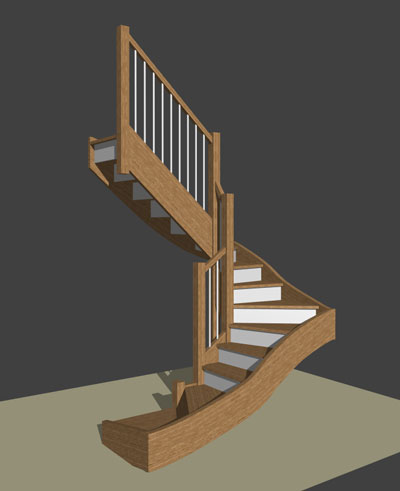Part of our ‘Staircase Basics’ Guide
Previous Page | Next Page | Contents
Let’s assume now you’ve had time to download StairDesigner, watch our starter series of videos and test it out. I hope you found them interesting and helpful.
Stair templates are great for setting up stairs fast and easy, and if you make stairs regularly you’ll want to have your collection of templates ready at hand.

Up to 80% of your stairs can be template built and the others will often be based on customized templates.
Whether you use templates or not, in general the design process should be divided into 7 steps:
- Initial preparation on paper or a CAD program
- Software set up using the different StairDesigner parameters
- Design the stairs in StairDesigner
- Optimizing the design
- Printing and DXF export
- Adding features with CAD
- Printing the complementary CAD drawing and templates
I’ll explain next how to prepare initial design details on paper, before opening up StairDesigner.
However, if you want to use a CAD program for the initial design work and editing DXF files, I suggest you try SketchUp and NANOCAD. You can download SketchUp and NANOCAD here.
If you need further advice, please post on our forum to talk to a member of our technical team. Thanks!
